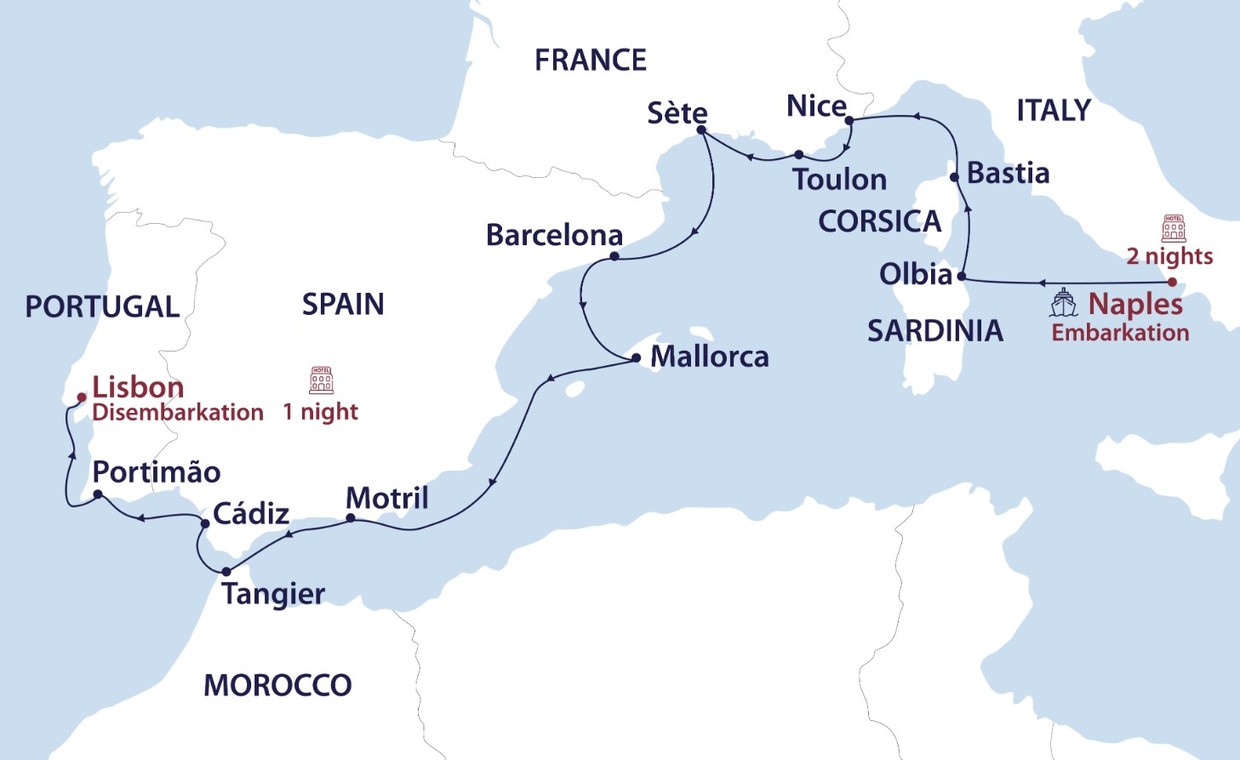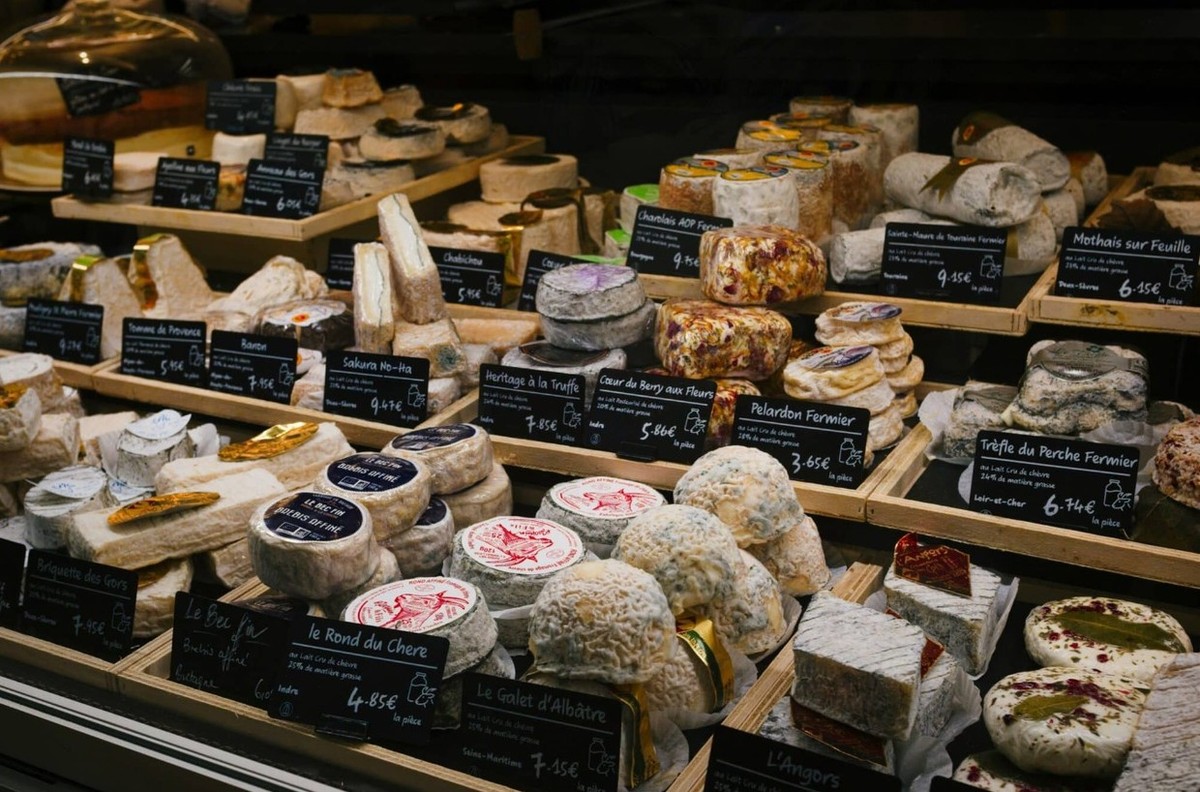
Welcome to Aurora Expeditions’ A Mediterranean Feast
Sailing in the wake of historical trade routes, we cross a sea brimming with traditional fare. In eras where olive oil was liquid gold and wine favoured over water, the goods traded on these shores established rituals and lifestyles. From the coastal kitchens of Italy, France and Spain we sail the seas to the island treasure troves of Sardinia, Corsica and Mallorca where we journey to century-old farmhouses, traditional fishing villages, world-class wineries and woodfired kitchens as we immerse ourselves in the culture, traditions and cuisines of the communities who ensure their homeland remains a treasure waiting to be tasted.
- Enjoy a taste of the Mediterranean at the farms, factories and fishing villages on Sardinia and Corsica and in the coastal towns of France, Spain, Morocco and Portugal
- Explore the markets of Nice, Toulon, Lisbon and Tangier with a culinary guide
- Discover local specialities from vintners, spirit makers and liqueur specialists at iconic wineries and bodegas
- Savour the flavours of the Mediterranean diet at traditional olive oil groves, family farms and wineries
- Combine your culinary experiences with iconic European sites to create your own delicious itinerary
Prices quoted here are often dependent on currency fluctuations. Please check with (01432 507450 or info@small-cruise-ships.com) for the very latest price, which may well be cheaper than the one advertised here.
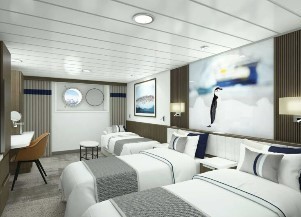
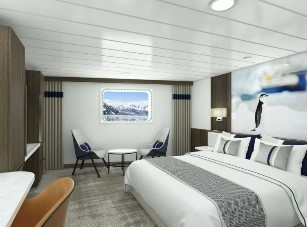
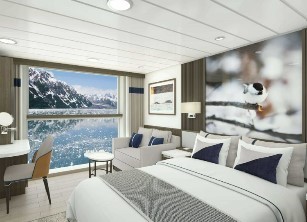
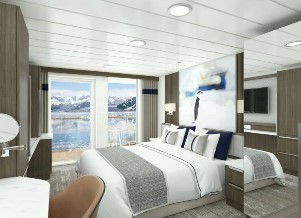
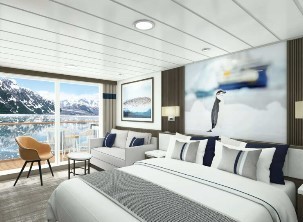
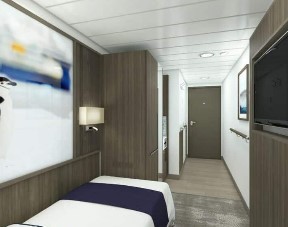
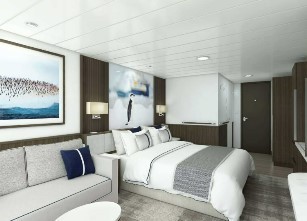
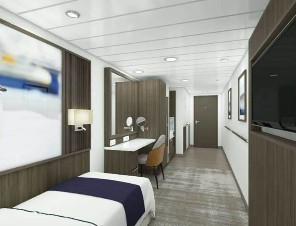
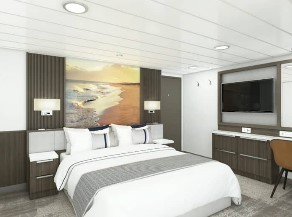
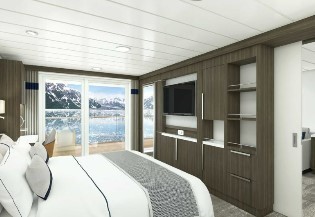
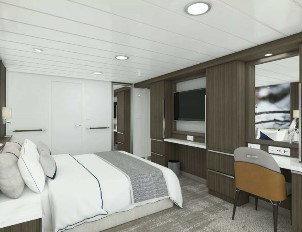
Welcome to Naples. On arrival at Naples airport make your way to the Arrivals Hall to meet our representative, followed by a transfer to our group hotel. At the hotel, visit our hospitality desk in the lobby to meet our team who will provide you with useful information regarding pre-embarkation procedures and about your time in Naples. You will also receive cabin tags for your luggage. Please clearly label the tags with your name and your cabin number on the ship. This evening offers time to relax in preparation for our day exploring Naples tomorrow.
Accommodation: Naples Hotel
Shrouded by the shadow of a brooding Mount Vesuvius, Naple’s ‘underworld’ reputation has mellowed in recent years, making it the perfect starting point for our explorations. Survivors of successive imperial invasions, outbreaks of plague and infamous natural disasters, Neapolitans are well known for their dramatic, larger-than-life personalities. A dedication to family and their ancestral roots makes them natural storytellers, with a passion to share their stoic city and its intrinsic tales with all they encounter. Developed by Rome’s elite as a series of holiday resorts and prosperous towns, the southern coastline of the Bay of Naples offers a wealth of insights into the ancient world, while the modern city of Naples is an eclectic mix of winding lanes, underground channels and glass-fronted high-rise buildings, making it a town with more than its share of tall tales.
Today's ‘Your Choice’ options highlight two cherished Neapolitan pastimes: delving into the city's storied history and indulging in its renowned cuisine, while history enthusiasts can explore the archaeological site of Pompeii to gain insights into Roman life and understand how its opulence contributed to the city's demise. The afternoon is free for further exploration before we gather this evening to celebrate our journey at a Welcome Event – Neapolitan style.
Personalise your exploration with our included ‘Your Choice’ experiences.
Option 1 ‒ Morning experience: Napoli on a plate
Embark on a journey through time as you delve into the rich tapestry of Italy’s culinary heritage. Join us on a gastronomic expedition through Naples where the timeless traditions of the beloved pizza originated. Experience the artistry of centuries-old culinary practices as you savour two distinct varieties of pizza, immersing yourself in the gastronomic culture of Naples. Soak up the authentic charm of a local pizzeria, and indulge in one of Naples’ iconic pastries, a sweet finale to a morning steeped in the flavours of history and tradition.
Option 2 - Morning experience: Naples; Yesterday - Today
A city of complex themes, and one of the bedrocks of Italian culture, Naples’ immense history plays out amongst the winding alleys of its old town, and what lies beneath. We begin with a stroll through these lively streets that still follow the decumani, or ancient Roman roads, originally laid out 2,000 years ago. Underneath the Gothic church of San Lorenzo Maggiore where the city of Neapolis’ forum once lay, we encounter its main street – Decumanus Maximus. Here we see traces of the former city, as we descend underground and explore this archaeological complex, which has both Greek and Roman roots. We learn the role of the Greek Agora and the subsequent Roman Forum, in civic and commercial life during antiquity, before skipping to the 20th century. Naples was Italy’s most bombed city during World War II, and these tunnels are thought to have saved the lives of more than 200,000 people who used the tunnels as bomb shelters. Back above ground we explore the city’s political and social history, from its Greek origins as Neapolis (the new city) to modern times. We find the Castel Nuovo, the previous political centre of the city, the Palazzo Reale, which served as the royal palace during the reign of the Spanish Bourbon Kings and the stoic buildings of the city’s medieval period. With the Bay of Naples as a backdrop, Naples reveals the twists and turns in her story throughout our quest into her past.
Option 3 ‒ Morning experience: Pompeii and Mount Vesuvius
Spend this morning with an expert guide at Pompeii, one of the world’s best-known archaeological sites. Once a prosperous commercial centre, Pompeii’s surrounding plains were among the most fertile in the Roman Empire. Reaping the rewards of trading grains, fruits, nuts, fish and, of course, wine, wealthy merchants flaunted their status by buying foreign products like expensive meat and salted fish from Spain, and provocative spices from Asia.
Known to the Neapolitans simply as ‘him’, Mount Vesuvius towers over the surrounding fertile plains at 1,281 metres. He has been rather quiet of late, but it was a different story in 79 BCE, when ash and rocks hurled sixteen kilometres high, and lava vomited forth engulfing the cities of Pompeii and its seaside sister of Herculaneum. Albeit a tragedy, the excavation of these extensive sites reveals treasure for archaeologists. Physical evidence of the city’s final dramatic moments, preserved forever amongst the volcanic ash, speak louder than words. The bones of a wealthy trader clutching the keys to his chest of profits, wine goblets and freshly baked bread sitting on tables ready to be consumed and the body of a wealthy woman sleeping in a gladiator’s quarters are some of the scenes that have been unearthed. Each tells a tale of intrigue, returned to life by the ruins and remains, of these Roman cities.
Accommodation: Naples Hotel (or similar)
Meals: Breakfast, Welcome Event canapés
This morning is at your leisure to enjoy Naples. We transfer to the port mid-afternoon to board the Douglas Mawson and sail west to the Italian island of Sardinia. This evening, we enjoy a Welcome Dinner where we meet our Aurora Expeditions team and crew.
Meals: Breakfast, Dinner onboard
Crossing ‘the Med’ on traditional trade routes, we reach the coastal city of Olbia on Sardinia’s east coast, in time to spend the afternoon on your preferred ‘Your Choice’ experience.
The Mediterranean’s second largest island, Sardinia is unique and enigmatic. Its coastline, beaches, granite cliffs and mountainous inland showcase sprawling resorts and medieval villages – all a testimony to the island's eventful history as the centre of the Mediterranean’s east to west trading route. A succession of conquerors gifted to the islanders' animals, seeds and plants to be raised and populated. Understandably the most popular plants were vines, which now support a burgeoning wine business with Sardinian wines popular in Europe.
Personalise your exploration with our included ‘Your Choice’ experiences.
Option 1 – Afternoon experience: The Aga Khan’s Folly; Porto Cervo
The undisputed capital of what is referred to as the Costa Smeralda is Porto Cervo. This town of barely a few hundred inhabitants, today trades with a different type of clientele – the rich and famous. We mingle with the owners of million-euro yachts and the international jet set who were encouraged to visit Porto Cervo by none other than Prince Karim Aga Khan IV. The Imām of the Nizari Ismāʿīli Shias purchased the land here in the 1960s and invited French architect Couëlle to add a little ‘joie de vivre’ to the place, a spark that remains to this day. Today, Porto Cervo remains a playground for the rich and famous. Spend your afternoon strolling along the marina, where you can admire luxurious superyachts, or simply bask in the sun at a seafront bar while soaking up the exclusive atmosphere. Whether you’re exploring the waterfront or savouring the town’s upscale charm, Porto Cervo offers a taste of refined luxury and exclusivity found in few other Mediterranean ports.
Option 2 – Afternoon experience: A Taste for Sardinia’s Wines
Enjoy a hosted vineyard tour that blends tradition with sustainability. Explore an Olbian vineyard under the Sardinian sun and learn about their integrated farming methods that eschew herbicides in favor of low-impact treatments. During your visit, you will enjoy a guided tour of the winery and an introduction to the Vermentino grape, a cornerstone of Sardinian winemaking famed for its crisp, aromatic wines.
Enjoy a tasting of these renowned wines alongside warm appetizers, selected charcuterie and cheese, and a variety of dried fruits, nuts, fresh seasonal fruits, and fruit jelly. Savour the Vermentino’s bright acidity, citrus notes, and subtle minerality, which are perfectly complemented by the traditional Sardinian bread. This tour offers an immersive dive into Sardinian wine culture, enriched by the island’s distinctive climate and soil.
Our journey today takes us to a slice of France in the Mediterranean. Though it has been part of France since 1769, Corsica maintains a distinct identity, blending Italian and French influences due to its historical ties with both nations. Known for its rugged landscapes, winding roads and craggy coves, Corsica’s 340,000 inhabitants have a strong sense of regional pride, tested annually by an influx of three million tourists. The island’s status as a territorial collectivity grants it greater autonomy within the French Republic, allowing for the preservation of its Corsican language and customs. This blend of French governance and Corsican heritage creates a rich, multifaceted culture that sets the island apart from mainland France.
Our ‘Your Choice’ experiences fill our morning, with time this afternoon to enjoy the town of Bastia on your own, before we sail for the French mainland in the early evening. Founded in 1378 by the Genoese, Bastia blends French and Italian influences, making it a quintessentially Corsican town. Its Baroque historic centre captures the essence of an ancient Mediterranean port. The name "Bastia" comes from "bastion," referencing the Genoese fortress built to guard against islanders. Explore the Terra Vecchia (Old Town) on foot, starting at the palm-filled Place St-Nicolas, which flanks both the port and the lively Boulevard Général-de-Gaulle. The vibrant colours of the old town’s houses once served as landmarks for returning sailors and continue to brighten the town today.
Personalise your exploration with our included ‘Your Choice’ experiences.
Option 1 - Morning experience: Cap Corse Peninsula
Embark on a scenic tour of the Cap Corse peninsula, where rugged mountains plunge dramatically into the sea. As you navigate the winding roads, you’ll find views of crystal-clear bays, hillside villages, and Corsica’s wild, unspoiled landscapes. Known as 'the island within the island', Cap Corse remained isolated until the late 19th century, preserving its unique beauty and traditional character.
Local conditions permitting, we visit the picturesque marina of Erbalunga and explore the seaside villages of Sisco, Pietracorbara, and Porticciolo. Ascending the eastern slopes into the mountains we continue to the western coast at Pino for panoramic views of lush hills and the azure sea. Finally, discover Nonza, perched on a dramatic black rocky promontory with sweeping vistas of the Mediterranean and its famous black sand beach. This tour promises a unique experience of Cap Corse’s rugged allure and cultural depth. (Note: This excursion involves many winding roads, which may not be suitable for those prone to car sickness or vertigo.)
Option 2 - Morning experience: Wine Tasting in the Patrimonio
Experience the charm of Corsica’s Patrimonio wine region, renowned for its unique terroir. Located in the northwest corner of the island, Patrimonio’s rugged, scrub-covered landscape features soils distinct from the rest of Corsica, enriched by chalky clay and limestone. The region benefits from a wide temperature range between day and night and is influenced by the cooling sea winds from the Ligurian Sea. Patrimonio, one of France’s pioneering organic viticulture regions, was granted AOC status in 1968, making it the island’s oldest appellation.
On this tour, you’ll explore a local winery and gain insight into the winemaking process. Learn about the main grape variety, Nieluccio, along with Sangiovese, Grenache, and Sciaccarello for reds and rosés, and Vermentino for whites. Enjoy a guided tour of the vineyards and cellars, followed by a tasting session of the region’s exceptional wines. Discover the historical roots of Corsican winemaking and savour the distinctive flavours crafted by dedicated winemakers who uphold traditional practices and organic cultivation.
Option 3 - Morning experience: The Living Heritage Company - LN Mattei Distillery
Discover the LN Mattei Distillery, a Corsican heritage landmark since 1872. Founded by Louis Napoléon Mattei, it’s renowned for Le Cap Corse Mattei, an aperitif blending quinquina wine with local fruits like citron and myrtle. Mattei’s vision to highlight Corsican produce continues with a diverse range of spirits, including Cap Corse Mattei Grande Réserve, Eaux de Vie, and new liqueurs. In 2021, the distillery introduced two distinctive gins: LN Mattei Distilled Dry Gin, which won a Gold Medal at the 2022 Concours Général Agricole, and L'Immortel Gin. Located on Domaine Mavela, the distillery’s traditional methods and seasonal rhythms are showcased through the meticulous hand-picking of fruits, careful ingredient preparation, and the creation of “mistelle” from Corsican grapes.
A tour of the LN Mattei Distillery highlights its artisanal expertise and commitment to quality. Finish your visit with a tasting of their exceptional spirits, reflecting the craftsmanship that has earned the distillery the title of ‘Living Heritage Company.’
There are plenty of treats on offer today as we reach the French mainland and berth at the port of Nice in true “Riviera style”.
More than any other Riviera city, Nice oozes charm. Its kilometres of beach, backed by iconic hotels and luxurious apartments and fronted by the Mediterranean Sea, have attracted the rich and famous for centuries. The broad boulevard along the beachfront, named Promenade des Anglais, honours Queen Victoria, who often brought her entourage to escape the dreary English winter. Russian aristocrats also made Nice their home, building a Russian Orthodox church that today holds a memorial to the fallen Czar and his family. Noted for its sunny days and enchanting evening light, Nice has long drawn artists whose galleries are filled with paintings of the city itself. Chagall, Matisse, Dufy, Picasso, and more worked, lived, and loved here among their wealthy sponsors and bon vivant friends. Residents, focused on fun in the sun, stroll to the market daily, buying fresh produce, gourmet foods, and flowers to adorn their seaside homes.
The centrally located port offers us the chance to stroll the iconic Promenade des Anglais, enjoy a swim in the Mediterranean from Nice’s Plage Publique De l'Opera, or perhaps head to the city’s famous neighbour, Monaco. One thing is for sure: in true Riviera style, today will have a touch of decadence.
Personalise your exploration with our included ‘Your Choice’ experiences.
Option 1 – Morning experience: Walking Nice and its Famous Markets
It’s Saturday, and in Nice, that means markets. Our guided walk through the Old Town leads us along cobblestone streets, where our host regales us with tales of French delights. Our food-focused tour culminates at the vibrant Cours Saleya, renowned for its bustling flower market since 1861. Here, locals and tourists alike revel in a dazzling array of flowers ‒ from elaborate bouquets to single blooms, each infused with unforgettable scents and colours. But where there are flowers, there is also French cuisine. Wander among colourful stalls where local vendors passionately display Provençal fruits, artisanal cheeses and savoury charcuterie. Don’t miss Queen Victoria’s cherished chocolate shop, offering historical confections and aromatic delicacies. The market buzzes with energy, creating a vibrant Mediterranean atmosphere where every stall tells a story of tradition and flavour, and the warm hospitality of Nice.
Option 2 – Morning experience: The Principality of Monaco and Prince Albert’s collection
From the days of its early Genoese rulers, the ever-expanding Principality of Monaco has been a political curiosity on the map of southern Europe. Ruled as a business rather than a country by the Grimaldi family, this exclusive enclave offers an insight into the lives of the ‘filthy rich’. Ferraris replace Fiats, designer dogs are carried in handbags and champagne flows like water, all thanks to an economy, which has earned the respect of, rather than robbed from, the rich. Smaller than New York’s Central Park, Monaco’s 500 acre size, boasts the second highest GDP per capita in the world. Although the 9,500 native Monégasque are banned by law from gambling, it is the nation’s foreign-born citizens with their bulging bank accounts, multi-million euro apartments and high-roller habits who boost the principality’s income, with over 30 per cent of its residents listed as millionaires.
Our guided walking tour introduces us to this unique place, culminating with a visit to Prince Albert’s own car museum. Following in the footsteps of Grace Kelly at the superyacht-filled marina, we recall how she met Prince Rainier during a visit to Monaco suggested by a friend while filming To Catch a Thief. Within a year, they were wed, and Grace Kelly became a princess, with 140 official titles. Her tragic passing left Monaco in mourning, with her face, name and favourite things found throughout the principality, reminding us of her enduring legacy. Our tour includes the palatial precinct known locally as ‘The Rock’, and the Cathedral (also known as Cathedral of Our Lady Immaculate), where Princess Grace and Prince Rainier were married and now rest. Moving to the waterfront, our journey takes a hairpin bend. From a wartime Ford Jeep to Prince Albert’s favourite Bugatti, the Prince’s private collection is packed with rare vehicles, Formula 1 winners and numerous Ferraris, Lamborghinis and the odd Rolls-Royce. Appealing to car aficionados and non-drivers alike, this decadent display is set to impress.
Option 3 – Morning experience: The Villa Ephrussi de Rothschild
This experience showcases Nice’s decadent past, with a focus on the region’s most exclusive enclave. We follow the Basse Corniche along the coastline to the private knoll of Saint-Jean-Cap-Ferrat, where we tour and enjoy a light lunch at one of the Riviera’s real treats. Synonymous with the word ‘exclusive’, Cap Ferrat is the home to generations of wealth. With a phone book full of famous names, there are a few stand-outs – one being Rothschild. The imitation Renaissance-style palazzo of Villa Ephrussi de Rothschild must be seen to be believed. Surrounded by exotic, Provençal, Japanese and Florentine gardens, it was built in 1905 by Baroness Beatrice Rothschild to showcase her passion for all things art. Without an heir, the Baroness bequeathed the seven hectares of land and some 5,000 works of art to the Academy of Fine Arts, giving ‘commonfolk’ the chance to immerse themselves in her lifestyle, if only for a morning.
Option 4 – Morning experience: The Art of Perfumery
Perfume-making is an art form in France, on par with its renowned fashion houses. The perfumers, known as 'Noses,' undergo seven years of rigorous training and are among the country's most revered artists. This morning, we journey to the historic hilltop village of Eze, where we visit Galimard, one of France's oldest perfume houses, established in 1747. At the Galimard Studio des Fragrances, we dive into the world of scent creation. Armed with our 'scent organ'—a kit of 120 essential fragrance ingredients—we will explore the craft of perfumery. Learn the techniques to refine your sense of smell and create your own unique perfume, which you’ll take home in a personalized bottle. (Note: If Galimard is unavailable, an alternative perfume house may be used for this excursion.)
Fronted by a marina packed with yachts and a port dominated by the French Navy, Toulon is a city on the rise. Not as glitzy as Saint-Tropez, Nice or Cannes, Toulon is a working town with coastal appeal and a vibrant culinary scene, attracting predominantly French holidaymakers. A crucial naval port since the 15th century, Toulon’s strategic harbour has played a vital role in French maritime operations. During World War II, the local Resistance fighters, including the Maquis, undertook numerous acts of sabotage, including the dramatic 1942 scuttling of the French fleet to prevent it from falling into enemy hands. This act stands as a testament to the city’s resilient spirit, which adds to its rough charm and very “French” attitude.
Personalise your exploration with our included ‘Your Choice’ experiences.
Option 1 – Morning experience: Toulon’s Sunday Market Scene
Sunday in Toulon brings alive the bustling Cours Lafayette Market, a beloved local institution. Led by our local guide, we weave through vibrant stalls brimming with the sights, scents and tastes of Provence and delight in specialties like cade toulonnaise, a savoury pancake, and fougasse adorned with plump olives and aromatic herbs, while fresh seafood, straight from the bay, enhances the market’s vibrant palate. Our gastronomic journey through Toulon is a sensory feast, inviting us to connect with local providores dedicated to celebrating regional flavours. The markets offer more than just tasty delights ‒ they are a window into Toulon’s culinary community and Provençal heritage.
Option 2 – Morning experience: Living the High Life in Saint-Tropez
Following the narrow winding roads through rolling hills and past craggy coves for around an hour, we find a waterfront town like no other. Few cities on the French Riviera evoke decadence like Saint-Tropez. A seaside playground adorned with superyachts, waterfront cafes and designer boutiques, it exudes luxury at every turn. Michelin-starred restaurants and chic boutiques line the marina region, frequented by the elite who arrive in Ferraris and dock their yachts without turning heads.
Saint-Tropez’s allure as a playground for the super-rich began in the 1950s, when artists and celebrities discovered its charm and tranquillity. Since then, it has become synonymous with exclusivity and extravagance, drawing the world’s elite to its shores. Today, it remains a symbol of wealth and status, where a morning stroll offers a fleeting glimpse into a realm that epitomises the pinnacle of luxury living ‒ a place that everyone should experience at least once in their lifetime.
Option 3 ‒ Full-day: Aix en Provence and Wine Tasting at Domaine de la Brillane
‘Aix’, as it’s affectionately known to its inhabitants, exudes elegance with leafy boulevards, public squares and grand avenues reflecting its wealth and status. Hosted by our local guide, we marvel at medieval ramparts, aristocratic facades, and enchanting fountains, as we explore the Saint Sauveur Cathedral, a blend of architectural styles from the 5th to 17th centuries. We walk the vibrant heart of Aix along the pedestrian-only Cours Mirabeau, a verdant tunnel adorned with opulent hotels, Belle Époque villas with their wrought iron balconies. Having built up a thirst, we venture further inland to Domaine de la Brillane, nestled in vine-covered hills facing the famed Montagne Sainte-Victoire. Spanning 14 hectares at 400 metres above sea level, this estate boasts ideal conditions for Coteaux d’Aix-en-Provence wines. All grapes are organically cultivated and hand-harvested, before being stored in rooms built of untreated Cévennes chestnut. This natural storage area ensures optimal ageing without artificial climate control. Indulge in a tasting of local wines, accompanied by appetiser boards featuring selections of cheese, cold cuts, tapenade, raw vegetables and hummus ‒ a perfect culmination of Aix’s charm and Provence’s winemaking heritage.
Often dubbed the ‘Venice of Languedoc’ for its picturesque canals and bridges, Séte is known for its thriving seafood industry, with its bustling fish market and waterfront restaurants offering fresh catches from the nearby Thau Lagoon. Séte’s waterside promenades are dotted with colourful buildings and busy cafes, offering a relaxed atmosphere perfect for enjoying an aperitif, glass of locally produced wine, or a cool beer amid soothing waterfront views. For those selecting a morning ‘Your Choice’ experience, the charming town of Sète waits for independent exploration in the afternoon. The city centre is just a ten-minute walk from the port, making it easy to discover its attractions at your own pace.
Personalise your exploration with our included ‘Your Choice’ experiences.
Option 1 – Morning experience: Montpellier and Château de l’Engarran Wine Tasting
Montpellier, a gem of French culture, is the seventh-largest city in France and a vibrant Mediterranean crossroads. After a scenic drive from the harbour, you will explore this enchanting city with its architectural wonders like the Italianate-style Opera Comédie and the historic Faculté de Médecine, while a stroll through the charming older quarter, reveals 17th and 18th century streets.
The day continues with a visit to Château de l’Engarran, an estate dating back to the 17th century. The estate’s wine legacy began in 1978 when Francine Grill bottled the first wine. Her daughters further developed the range, and today, Diane Losfelt, named Winemaker of the Year in 2021, continues the matriarchal tradition. Enjoy a wine tasting amid the estate’s picturesque vineyards and learn about its rich history and evolving style, before returning to Séte.
Option 2 – Morning experience: Medieval Pezanas and the Art of Making Vermouth
What better way to spend a morning in the Languedoc than visiting a picturesque medieval village and touring France’s top-selling liqueur: vermouth. Start your day in Pezenas, a royal town dating to the 13th century. Wandering through the historical centre, you will find revolution era bourgeois houses, cobbled streets, and period features. Pezenas is also known for its craft stores, where local artisans display a variety of handmade goods, adding to the town’s artistic vibe.
After exploring Pezenas, continue your journey to La Maison Noilly Prat for a tour and tasting. Vermouth, in the true tradition of French aromatised wines, was originally made for medicinal purposes. However, its taste quickly caught on as an aperitif, and it now ranks among the most popular aperitifs in the world, not just in France where it shares centre stage with pastis, an anise-flavoured spirit. At La Maison Noilly Prat, you’ll tour the cellars to learn about the history and production of this renowned vermouth, followed by a tasting that showcases its distinctive flavours. Combining the historical charm of Pezenas with the cultural experience of vermouth tasting at La Maison Noilly Prat offers a delightful morning in the Languedoc, weaving together history, culture and the art of French aperitifs.
Option 3 ‒ Full-day experience: The Prince of Walled Cities – Carcassonne
Surrounded by turreted walls and a deep moat, Carcassonne has attracted moviemakers since 1908, after French inventors the Lumiere brothers first produced short films using their newly developed motion-picture camera and projector, between 1895 and 1905. The setting for Charles Perrault’s classic tale of Puss in Boots, Carcassonne’s fortified walls offered a fairy tale ambience. Of course, life here was nothing like the ‘men in tights’ Robin Hood movie. The reality of flaming arrows, grapnels, catapulted stones and towers full of French soldiers shattering the peace as the town braced itself for invasion, provides modern-day visitors with a truer tale of life in the Middle Ages. Carcassonne is also a port on one of the world’s most successful engineering endeavours, the Canal du Midi. Running 240 kilometers from Toulouse to the coast, the canal opened the Mediterranean to barge traffic from the Atlantic, an important economic miracle at the time.
Entering Spain, we find ourselves at the vibrant Catalonian capital of Barcelona. Choose your favourite ‘Your Choice’ experience for a fun-filled morning. Having familiarised yourself with the city, either return to the ship for lunch, or remain in town for a free afternoon exploring Barcelona’s many attractions. Stroll iconic Las Ramblas, visit one of the city’s renowned galleries, or shop to your heart’s content. The Douglas Mawson will be at the downtown port, ready to set sail for Mallorca in the early evening.
Socially, culturally and industrially, Barcelona shines as a beacon of difference in Spain. Proudly Catalonian first and Spanish second, its people are free-spirited, liberal thinkers with a passion for their freedom. In the last 30 years, Barcelonans have sculpted their city into one of Europe’s most venerated travel destinations. Its boulevard-style main street, Las Ramblas, is the name on every traveller’s lips, and Barcelona’s vibrant is as sought after as it was during the Spanish Empire’s monarchal peak. A palatial stronghold of the 15th century power couple, Queen Isabella and King Ferdinand, Barcelona greeted a jubilant Christopher Columbus upon his return to Spain and the rest as they say, is history. The city has never looked back.
Personalise your exploration with our included ‘Your Choice’ experiences.
Option 1 – Morning experience: The Best of Barcelona
Our locally guided tour this morning celebrates the artists and authors who have venerated Barcelona as a work of art for centuries. Famed for its vibrant arts scene, Barcelona shows off its style with works scattered in its plazas and parks. Miro, Picasso, Vidal and Montaner all called Barcelona home. But it is the name Antonio Gaudi, which attracts 21st century art aficionados worldwide. Queues of admirers line the streets outside his apartment buildings daily, yet Gaudi was a pious soul, befriended by the men of his church. We start our day in Barcelona at his masterpiece of modernist architecture – La Sagrada Familia. We explore its intricate interior and exterior with our specialist guide and learn about the history and symbolism of this ongoing construction project, before descending to Plaza de España, Gran Via and the surrounding streets. Next is the elegant avenue of Paseo de Gracia, home to Barcelona’s most inspired modernist architecture. Our tour returns you to the ship, which is berthed within easy walking distance of both the Old Quarter of Barcelona and Las Ramblas.
Option 2 ‒ Morning experience: The Art of Food Catalonian Style
Discover Barcelona’s vibrant culinary scene on a flavourful journey through the Gothic Quarter, guided by a local expert. This walking tour immerses you in the city’s ‘foodie’ delights, from Spanish vermouth and pintxo to sizzling Catalan specialties and tempting finger foods.
Explore historic markets like Mercat de Sant Josep de la Boqueria, a cornerstone of Barcelona’s food culture since 1217. As you wander its colourful stalls, your guide will share stories of its evolution from a modest meat market to a bustling hub of fresh produce, artisanal cheeses and cured meats. Each stop reveals a taste of Barcelona’s rich culinary heritage, while the narrow, historical streets connect you to the city’s unique food culture. This tour combines history with the region’s flavours, offering a delicious insight into Barcelona’s gastronomic story.
It's time to say “Hola” to Mallorca, with a full day in port at Palma de Mallorca to enjoy the sun, wine and food that makes this island so unique. An autonomous region of Spain, the economy of the Balearic Islands has ebbed and flowed in line with the waters to which they owe their fame. Recent years have brought an influx of tourists on flight inclusive packages and Europeans seeking an ‘expat’ lifestyle on a budget. But there is more to these islands than a suntan and a smile. Their history paints a portrait of brave islanders defending their lands from far more sizeable empires. The Carthaginians, Romans, Byzantines, Arabs, British and Spanish have all left their mark, gifting this eclectic archipelago a story waiting to be told. We spend the morning ashore, before sailing west to the Spanish coast.
Personalise your exploration with our included ‘Your Choice’ experiences
Option 1 - Morning experience: The King of Oils
Olive oil, a cornerstone of Spanish cuisine, is produced with exceptional quality on the island of Mallorca. Revered as "liquid gold" by early traders, Mallorca's organic olive oil has recently become a hallmark of the island. This morning, we delve into the rich history and modern importance of this essential ingredient, exploring its impact on Mallorcan traditions, lifestyle, and economy. At a local olive oil farm, our host will guide us through the production process, sharing the fascinating story of this prized fruit. We’ll gain insights into every aspect of olive oil before savouring its exquisite flavours firsthand.
Option 2 - Morning experience: Palma de Mallorca
Our locally guided tour takes us to squares, palaces, courtyards and gardens in Mallorca's capital. Palma’s most iconic site is no doubt its cathedral. Taking over 300 years to build, the honeycomb-like attributes of the Catedral-Basílica de Santa María de Mallorca depict the city’s grandeur in a style called Mediterranean Gothic. Its partner in architecture, the Almudaina Palace, is located next door. The summer residence of the King of Spain, the palace houses royal collections from the past 600 years, including priceless tapestries, paintings and sculptures.
On a hilltop above the city is Bellver Castle. Courtesy of its unique design, making it one of Europe’s only circular castles, its 360-degree view offers a breathtaking panorama of the city below. Built in the 14th century for King James II of Majorca, its story is one of many political conspiracies, with its use as a prison for high-ranking parliamentary officials a tale to be heard. We take time to explore the city’s monarchal wonders, along with its alleys and back streets, gifting us a true insight into the island’s capital city.
It’s time to relax and enjoy sailing the Med today as we follow the traditional trade route from the Balearic Islands to the Spanish coast. Enjoy a swim, sauna or simply relax with a good book. Hone your photography skills with our resident photographer or join a presentation by our host.
We meet the mainland at the port of Motril affording us access to the city of Granada and the southern slopes of the Sierra Nevada; the Alpujarra's. We immerse ourselves in the rural culture, with a chance to spend time with descendants of those who have lived on the land for generations with a farm to plate experience or walk amongst the Moorish empire and Christian monarchical periods greatest architectural achievements at the eclectic city of Granada.
Personalise your exploration with our included ‘Your Choice’ experiences.
Option 1 - Full day experience: Granada
More than any former Moorish stronghold, Granada affords visitors an insight into the sophisticated society assembled by the Moors, and the determination of the Christian monarchy to establish their dominance by forcing them out of the Iberian Peninsula. Scattered throughout the city are monuments to the days when each empire ruled the peninsula, the wealth and power they wielded and the expansion of their influence worldwide.
Crested by the famed Alhambra, the city revels in the wake of its past. Unable to recreate Allah’s physical features due to their religious beliefs, the scholars and craftsmen of the Moorish Empire worked verses and poems of praise from the Qur’an into their art, architecture and gardens, the best examples of which are the wonders that are the Alhambra and the geometric gardens of the Generalife. Without the filigree masonry work of Alhambra, Spain would not be Spain. Exquisite handcrafted wooden calligraphy fills the arches, ceilings and corners of this former palace while intricately patterned ceramic tiles hint at religious fervour. Capped off by clever engineering disguised in the form of water features and fountains, Alhambra is a story unto itself. Even its 15th-century addition represents the conquest and reconquest of La Reconquista, with Charles V, who was considered at the time to be the most powerful man in the world, building his palace directly on top of the original ramparts.
Option 2 - Full day experience: The Alpujarra
Strewn with almond trees and whitewashed towns, the Alpujarra is the food basket of Andalusia. Cuisine is high on the list here with speciality pastries and cakes made from recipes dating back to the time of the Moors, and techniques used to cure meat coming straight from early Christian cookbooks. During the early days of the Arab invasion, the Alpujarra was a nucleus of Christian resistance, but it was the Muslim domination of Al-Andalus that allowed the Alpujarra to thrive. When the region fell to the Catholic monarchs, all Muslims were forced to be baptised or emigrate; those who chose the first option were known as Moriscos. Languages were suppressed and customs lost. In recent times, the people of the Alpujarra have supported a resurgence of former traditions. Villages, such as Pampaneira and Trevélez, are returning to their roots. We visit an Andalusian village to learn about the past and present before enjoying lunch at a typical Alquería de Morayma – a small farm and farmhouse – to meet some of the Moriscos’ descendants and hear their story.
Meeting the African coast at Morocco, we find a city with a few tales to tell. Unique amongst Moroccan cities, Tangier has a chequered past, affording us one of Europe’s most egocentric stories. Designated an ‘International Zone’ in the early 20th century, Tangier harboured no drug laws, no taxes, no banking restrictions, no censorship laws and no morality laws. Attracting a worldly mix of expat residents, it played house to everyone from eccentric British nobility to American authors, Franco’s civil war army to Nazi spies, while it awaited its inclusion in the post-war nation of Morocco. Stories of elicit affairs, underworld deals, and espionage abound in this city which remains as colourful as its history suggests.
Personalise your exploration with our included ‘Your Choice’ experiences.
Option 1 - Morning experience: Tangier Kasbah district, Kasbah Museum and American Legation Museum
We begin our journey at Tangier’s fabled Kasbah. Largely unchanged since Roman times, the Kasbah was the traditional residence of the Sultan and his harem and is now one of the most fashionable residential areas of Tangier. During a guided stroll we discover the Grand Socco. This café filled plaza serves as the gateway to Tangier´s medina and was once the haunt of Paul Bowles, William Burroughs and their Beatnik friends who gathered here to discuss life and literature while mingling among double agents and expats during the notorious time of international rule. Our next stop is at the American Legation. The first American public property outside the United States, the American Legation is now a museum that traces the history of the two countries relationship. As one of the first countries to recognize America's independence, Morocco permitted the new United States government to establish a legation in Tangier in 1821. It is the only historical monument to have remained in American possession since the birth of the American nation. Amongst several displays here is a letter from George Washington to the Sultan - Moulay Abdellah.
Option 2 – Morning experience: A Taste of Tangier
This ‘foodie’ tour of Tangier allows you to dive into the city’s culinary journey. Tangier’s cuisine reflects a fascinating blend of Moorish and Spanish influences, with each bite telling a story of its past. From the Moorish tradition of intricate spice blends to Spanish touches like rich, savory stews, and delicious colonial French deserts, the food here is a testament to the city’s eclectic past.
Stroll through the historic M'sallah and the old town district, where narrow alleyways and traditional architecture set the stage. Taste local delights like caliente, stuffed dates, and bissara, each crafted with time-honoured techniques. As you visit bustling markets and interact with artisans, your guide will reveal how these diverse cultural influences have shaped Tangier’s unique identity, while we snack like a true local.
Option 3 ‒ Full-day experience: The Artisan Enclave of Tétouan with Traditional Lunch
Little more than an hour’s drive east of Tangier lies the coastal enclave of Tétouan. This authentic whitewashed town sits at the foot of the Rif Mountains. Once the capital of the Spanish protectorate of Morocco Tétouan blends Arabic and Spanish culture and architecture. Our morning is spent exploring the UNESCO World Heritage listed medina. We walk the meandering lanes of the souk, discover the Jewish and Spanish quarters and visit the Bab Akla School of Traditional Arts and Crafts, where we observe masters instructing apprentices in 10 ancient crafts gifting us an insight into how the Kingdom keeps its ancient traditions alive. Tétouan’s numerous artisan schools have produced some of Morocco’s best painters over the past half century. They proudly encourage traditional art forms which may otherwise be lost to the modern world. Lunch is taken at a local Riad before we return to the ship.
The proud city of Cádiz sits at the mouth of the Guadalquivir River. As the gateway to the Mediterranean, it is touted as the oldest continuously inhabited settlement in Europe, with its dominant families claiming ancestry dating back to Roman times, when the city was called Ceret, and the wine produced was Vinum Ceretensis. From Phoenicians to Iberians, Romans to Moors, Cádiz had its fair share of invaders. It is no wonder its skyline is dotted with 120 watchtowers, including the 150-foot-tall Torre Tavira, used for spotting sails as they appeared on the horizon – often the first sign of the return of long-lost explorers. A Spanish naval base even today, it was off the coast of Cádiz at Cape Trafalgar where the British won the battle of the same name over Napoleon’s fleet, with the loss of Horatio Nelson. It was from Cádiz where Christopher Columbus set sail to discover the ‘new world’. And it was in Cádiz harbour where Sir Francis Drake sacked and burned so many ships that he delayed Spain’s attempt at invading England’s by at least a year and changed the course of world history.
Personalise your exploration with our included ‘Your Choice’ experiences.
Option 1 – Morning experience: The Story of Sherry
It is the fortified wine, known worldwide as sherry, which has dictated the fate of Jerez. Introduced by the Phoenicians in 1100 BCE, this popular wine has brought both wealth and strife, with the greatest haul of sherry wine made in 1587 when Sir Francis Drake attacked the nearby port of Cádiz and carried off 3,000 kegs. The city’s bodegas and local wineries remain the world’s largest producers of sherry which although considered by some as a wine which has seen better days, is as popular in Spain today as it was in centuries past. In fact, in Europe, 'sherry’ has protected designation of origin status, and under Spanish law, all wine labelled as ‘sherry’ must legally come from the Sherry Triangle, an area in the province of Cádiz. After a short walk of the historic centre of Jerez, we spend time with a wine expert, who introduces us to the region's wines during a wine tasting.
Option 2 - Morning experience: A Taste of Cádiz
The heart of Cádiz is the whitewashed Casco Antiguo, where a maze of narrow streets takes us past plazas, baroque churches and 18th century merchant houses, but it is the old port of Cádiz which brought riches to the town. Known as the Golden Age of Cádiz, goods hailing from all four corners of the world crossed paths here, with the trade coming from the Americas a particular favourite. Modern day Cádiz trades a different kettle of fish – literally. Situated on the Strait of Gibraltar, Cádiz is on the path of the bluefin tuna’s seasonal pilgrimage as they pass through the Mediterranean to mate. For over 3,000 years, passing shoals of bluefin tuna have been met with almadrabas – mazes of nets placed to intercept the route of the tuna. Important to the culture of the region, it is also sustainable and highly regulated to ensure that smaller fish are not caught. We learn about various species of fish and taste local tuna and oysters.
Option 3 – Full-day experience: Walking the Heart of Seville
One hour north of Cádiz lies Andalusia’s famed city of Seville. Our local guide tells a tale of Seville supported by a host of history’s famed conquerors, stories of the ‘new world’ and a clash of cultures should read as famous as the buildings we visit. Built in the 14th century as a Mudejar style palace, The Alcázar is the oldest European monachal residence still in use. Moorish influences join forces with tokens of Gothic, Renaissance, and baroque style added by later Christian kings, all with harmonious charm. Islam and Christianity vied for power in this city, with the might of Christianity being victorious by building Europe’s third largest cathedral right over the top of a 12th century mosque. The largest Gothic structure in the world, the cathedral houses many famous souls. In 1899, 400 years after his death, the renowned explorer, Christopher Columbus, finally found an eternal place to rest, in Seville Cathedral. Towering over the cathedral is Seville’s crowning glory – UNESCO World Heritage listed Giralda tower, which was inspired by Marrakech’s Katoubia mosque. Christian overlords allowed this Islamic minaret to remain albeit as the cathedral’s bell tower. Its top storey heralds a Renaissance motif, that was added in the 16th century, affording travellers one of the greatest cityscapes throughout Spain.
Our stroll of Seville continues through the Barrio Santa Cruz, Seville’s once-thriving Jewish quarter. This maze of alleyways is full of plazas, tile-covered patios, and whitewashed houses draped in flowers, leading us to Plaza de España, Seville’s spectacular central square – the perfect end to a delightful amble through Seville. Our tour fills our morning, with time for independent exploration before returning to the ship mid-afternoon. (A boxed lunch will be provided by the ship as to extend your time in Seville)
Set on the estuary of the Rio Arade, Portimão was a flourishing fishing village until only 30 years ago. Greeks, Phoenicians and Carthaginians all plied their trade but in the 11th century the Moors arrived, and Burj Munt as it became known, never looked back. A gateway to the fortified town of Silves and neighbour to a coast of classic, caved beaches, Portimão fishes for a different catch these days, with its marina home to a flotilla of gently bobbing yachts, and riverfront promenade host to casual cafes and bars.
Personalise your exploration with our included ‘Your Choice’ experiences.
Option 1 - Morning experience: Silves Castle and Portuguese Pastry Workshop
Once the capital of the Algarve’s Moorish kingdom, Silves hosts us this morning with a locally guided tour and confectionery focused workshop. We tour the 11th century red sandstone Castelo de Silves, whose square turrets and impenetrable ramparts loom over the town from an immense orange grove. This impressive castle once formed part of the wall that encircled the city and was an important defence as the residence of the Moorish kings of the Al-Garb. Steeped in history, the castle has a 60-meter-deep well and a set of vaulted cisterns that still supplies the town with water. Occupying much of the arable land surrounding the city, the Almond tree has been a regional symbol for centuries. Its fruit is one of the main ingredients in the beloved Portuguese confectionery, marzipan, sculpted into shapes known locally as Doce Fino. This millennial art form plays a significant role in the culinary culture of Portugal. We join a workshop that looks at the relationship between everyday life, festivities and the development of Doce Fino. We get ‘hands on’ and learn the basics of the technique with the guidance of a local confectioner. We return to the ship for lunch, with plenty of time this afternoon to self-explore Portimão.
Option 2 - Morning experience: Silves Castle and Portuguese Pottery Workshop
The former Algarve capital of Silves hosts us this morning with a locally guided tour and pottery workshop. Showcasing a unique blend of heritage, culture and imagination, emphasised by will and passion, Portuguese ceramics are famous worldwide. We enjoy time with a local ceramicist, who welcomes us to their studio. They share the art of modelling clay pieces into works of art and demonstrate how to make various pieces by using the potter’s wheel and hand-working clay. Returning to town, we tour the 11th-century red sandstone Castelo de Silves, whose square turrets and impenetrable ramparts loom over the town from an immense orange grove. This impressive castle once formed part of the wall that encircled the city and was an important defence as the residence of the Moorish kings of the Al-Garb. Steeped in history, the castle has a 60-metre-deep well and a set of vaulted cisterns that still supplies the town with water. We return to the ship for lunch, with plenty of time this afternoon to self-explore Portimão.
Option 3 - Full day experience: Caminho dos Promontórios Clifftop Walk with a Winery Picnic Lunch
The municipality of Lagos’s coastline is characterised by the jagged and laced appearance of a continuous line of cliffs. The Caminho dos Promontórios, or ‘Path of the Headlands’ Walk follows the coastline for six kilometres, between Praia do Molhe, near the mouth of the Arade River, and Praia do Paraíso, near the village of Carvoeiro. From the Ponta do Altar headland to the east, a succession of small headlands alternate with recessed beaches and coves resulting from ancient landslides, making this region of the Algarve unique. We follow the clifftop path to learn the geology, lithology and geomorphology, marine ecosystems and coastal vegetation that makes this coastline so scenic. Having worked up a thirst, we drive inland to a traditional Algarve winery. The demarcated region of the Algarve produces red, white, rosé and liqueur wines. The white and red wines are characterised by their ripe, fruity aromas and warm, velvety taste. We enjoy a handcrafted picnic lunch among the vines with a variety of local products to taste, along with wines from the producer, of course.
Lisbon sits on the Tagus River, granting it access to the coast that contributed to Portugal becoming one of the world’s most successful trading nations. Explorers such as Vasco da Gama, Magellan, and Bartholomeu Dias sailed under Portuguese patronage, discovering new lands and establishing trade routes. The city flourished, with much of the wealth from its colonies invested in grand architecture. On the morning of All Saints Day in 1755, a 7.7 magnitude earthquake struck Lisbon, followed by tsunamis and fires that devastated the city. Over 75% of the population perished. Today, Lisbon reflects this history, with few buildings predating the 18th century. The city was rebuilt with wide boulevards, elegant facades, and parklands, all complemented by opulent baroque interiors and distinctive black-and-white tiled pavements. Lisbon's compact size makes it easy to explore, with hillside suburbs accessible by trams and funiculars, and a vibrant waterfront that continues its historic trading legacy.
We disembark Douglas Mawson and join a locally guided tour of Lisbon. The city’s story unfolds as we visit the suburb of Belem, with its Jerónimos Monastery, where we hear more of Vasco de Gama’s adventures; the waterfront memorial of Monumento dos Descobrimentos, honouring Prince Henry the Navigator and his fellow explorers; and the Torre de Belém – the 16th-century fortification that acted as the gateway to Lisbon for all seafarers. This insightful tour tells tales of exploration, colonisation and devastation, drawn together by the history of a city the influence of which has shaped much of our modern-day world.
Near the famed Cais do Sodré train station, sits the beautiful building of the Mercado da Ribeira with its Moorish-style dome. To end our tour, we visit this famous market and its popular ‘Time Out’ food complex. Lisbon’s populace has shopped for fresh fruit, vegetables, fish and meat here since 1882, with the market’s latest innovation including 30 ‘pop-ups’ offering petiscos (Portuguese tapas) and traditional products such as cheeses, cured hams, smoked sausages, fish conserves, wines and more. Our local guide introduces us to a variety of Portuguese specialties, such as pastéis de nata – the Portuguese tart, a national specialty, with a rich egg custard nestled in shatteringly crisp pastry. Take time to explore and enjoy lunch (own expense), before transferring to our hotel mid-afternoon.
This evening, we gather to celebrate our journey at a Farewell Event.
Accommodation: Lisbon Hotel
Meals: Breakfast, Farewell Event canapés
After breakfast, check-out of your hotel and transfer to the airport for your onward flight.
Meals: Breakfast
In the spirit of 21st century travel, we encourage you to adopt a flexible and adventurous attitude when joining our voyages. This itinerary is a guide only and is subject to change due to weather, sea state, government rules, and other conditions beyond our control.
Most walks on this tour are easy to moderate, complemented by coach rides to key sights. However, many venues lack lifts due to preservation rules, and we’ll explore busy locations with narrow cobbled streets, ancient roads, and uneven steps, therefore this voyage is not suitable for passengers with walking difficulties or wheelchairs.
Douglas Mawson
Vessel Type: Small Ship Expedition
Passenger Capacity: 154
Lenght: 104.4 m
Built: 2025
Designed for global discovery
Adventure has a new name. Setting sail in 2025, our new state-of-the-art ship, the Douglas Mawson, is the last in a line of purpose-built vessels that have redefined small ship expedition cruising.
Named after the legendary Australian geologist and explorer, our new small ship embodies Mawson’s pioneering spirit and is designed for global discovery. Featuring the revolutionary Ulstein X-BOW® and purpose-built with enhanced sustainability features, it takes on average 154 adventurers to the world’s wildest places in smooth, quiet comfort. It boasts our most extensive range of cabins yet, including a range of single cabins.
The Douglas Mawson features a host of amenities to help you connect with like-minded travellers and elevate your time onboard our floating base camp for adventure. After a long day of exploring, head to the back deck to swim in the heated outdoor swimming pool, find a sun bed to read on, or soak in one of two Jacuzzis. Work up a sweat in the gym before unwinding in the sauna, resolve to learn something new in the Citizen Science Centre, then enjoy a delicious meal with new and old friends in one of two restaurants. Or, with multiple observation areas throughout the ship, simply relax in comfort while you keep watch for wildlife or incredible landscapes unfold before you.
While enjoying the luxurious amenities onboard, you can rest assured that our aim to get you off the ship to explore the natural environment as much as possible through our unique activities program remains unchanged.
Newest Ulstein X-BOW®
The Douglas Mawson features the newest streamlined Ulstein X-BOW®, designed for global discovery. The revolutionary design cuts through the swell, offering unrivalled stability on ocean crossings and helping to reduce fuel consumption. It’s just one of the many sustainability features that helps us travel more responsibly.
Heated Pool, Jacuzzis & Sauna
In between landings, enjoy access to the onboard gym or unwind in the sauna. Or head to the back deck to swim in the heated outdoor pool, enjoy a drink at the pool bar, or soak in one of two Jacuzzis, watching the world go by.
Leading Technology
The Douglas Mawson is at the cutting edge of nautical technology, fitted with industry-leading technology including world-class return-to-port equipment. The ship also features a medical clinic designed for use in remote areas.
Built for Adventure
The Douglas Mawson features Zodiac access points and an activities platform, making boarding the Zodiacs as quick, efficient and safe as possible, minimising wait times and getting you closer to the action for longer. In our mudroom you will have access to lockers to store gear & boots and rapid drying areas for clothing.
More Cabin Choices
The Douglas Mawson features 11 different types of cabins, including a range of spacious single berth cabins – all adorned with elegant Nordic interior design features.
Multiple Observation Areas
As you explore the ship you will find indoor lounge areas with floor-to ceiling windows, and multiple open decks with expansive 270-360 degree views. The Glass Atrium Lounge inside the bow is a fantastic place to sit and watch for wildlife – with a drink in hand. There is no shortage of spaces to take in the majesty of the incredible world outside!
Lecture Theatre
On all expeditions you will meet naturalists and local specialists, who offer presentations on their area of expertise to enhance your appreciation of the destination you are exploring.
Join the team in the lecture theatre for presentations covering a broad range of topics to suit every interest, from history and culture to biology and climate change. Regardless of the topic, they all have one thing in common: they all aim to engage, educate, entertain and turn you into an ambassador for the planet.
Citizen Science Center & Lounge
Learn more about the world and the unique destinations Aurora visits by visiting the onboard naturalist and Expedition Team in the world-class Citizen Science Center. You will be rewarded for your thirst for knowledge with one of the best views on the ship.
Library
With floor-to-ceiling windows, the library is a peaceful sanctuary where you can find non-fiction books to read up on the day’s destinations, use a public laptop to organise your photos or play board games with newfound friends.
Choose from our range of informative non-fiction titles, wildlife guidebooks, travel journals, novels and a selection of children’s books and board games.
Wildlife guides, books and binoculars can also be found on the observation lounge on Deck 7.
Mudroom
No need to take your wet expedition gear back to your cabin to dry. Keep your cabin warm and cosy by leaving your outer jackets and pants in the mudroom.
The mudroom is your launchpad for all shore excursions and activities. Here, you will have access to a locker when you can hang your gear up to dry, and store your boots between excursions.
Swimming Pool & Jacuzzis
There are two Jacuzzis on the top outside deck which offer amazing views of the world outside, a heated outdoor pool surrounded by sun beds you can relax on after a long day of exploring, and a pool bar.
Gym & Sauna
During your voyage, enjoy complimentary access to the gym or visit our sauna, which we highly recommend after the Polar Plunge!
Restaurants
One of the most important parts of any expedition is the food! Whatever adventures the day holds, you will be fuelled-up with hearty meals and delicious morning/afternoon teas cooked by our onboard chefs.
Meals are a great time to soak up the expedition camaraderie in our open seating dining area. Share stories with your fellow travellers and ask our expedition team questions that may have come up during the day.
Tea, coffee and snacks are available 24 hours a day, and our chefs offer different menu options and courses for each meal. Enjoy the range of house wine, beers and soft drinks included with dinner after a long day in the wild.
We also invite you to join your captain and expedition team for informal Captain’s Farewell drinks, with complimentary beverages and cocktail appetisers, followed by a 3 course meal.
Bars & Lounges
Communal meeting areas have always played a major role in fostering the warm camaraderie on board our ships. They are the heart of the expedition, where people meet to share tales from the day, swap photos, keep an eye out for wildlife and watch the sun go down.
The bars and lounges on board are refined yet inviting places to gather, with floor-to-ceiling windows offering stunning views, and of course friendly bartenders to shoot the breeze with.







